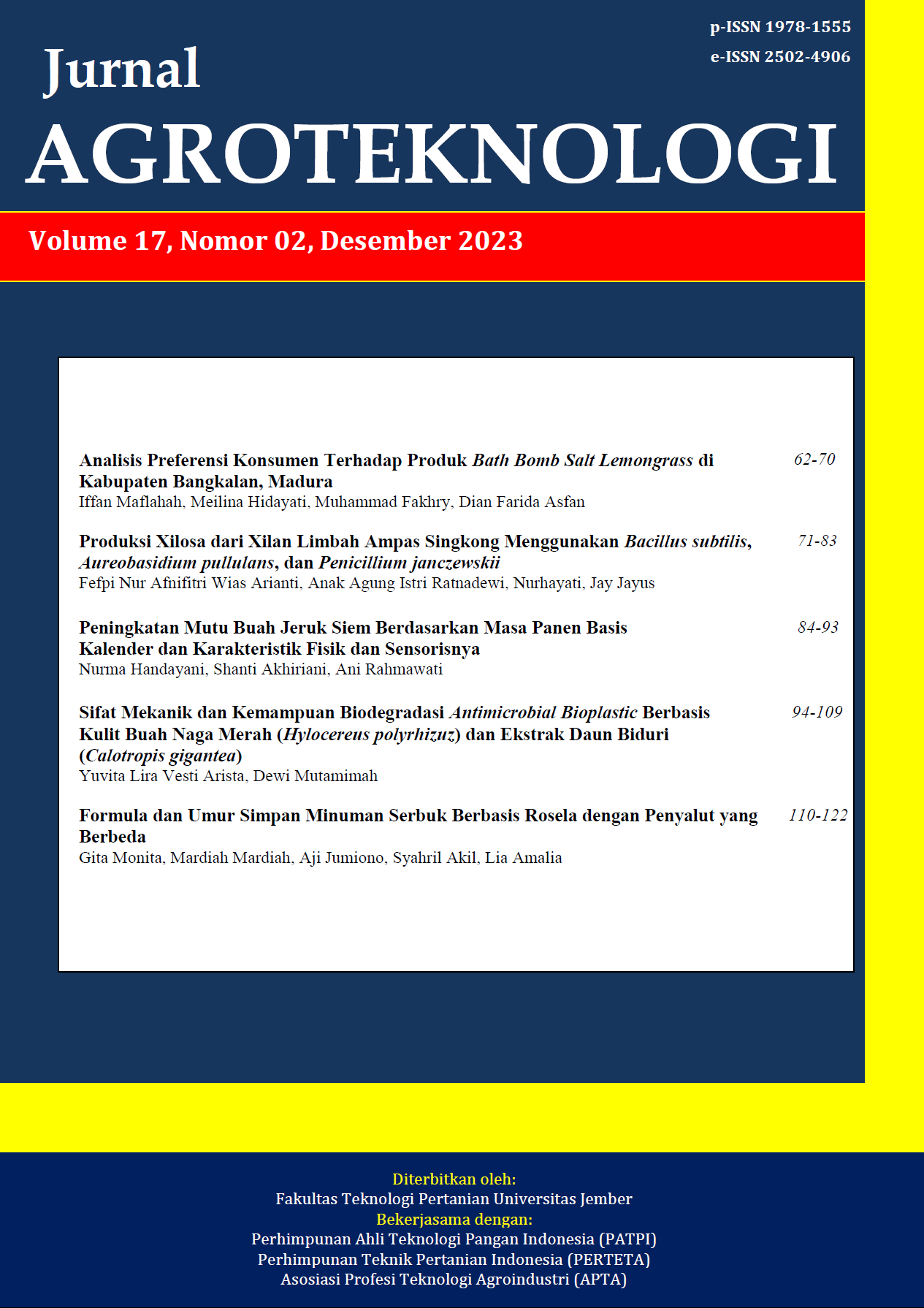Produksi Xilosa dari Xilan Limbah Ampas Singkong Menggunakan Bacillus subtilis, Aureobasidium pullulans, dan Penicillium janczewskii
PRODUKSI XILOSA DARI XILAN LIMBAH AMPAS SINGKONG
Abstract
The demand for xylose as a xylitol raw material is increasing. The resource for this material can be explored from agricultural waste such as lignocellulosic material which is widely available in nature, cheap, and renewable. The bioconversion of lignocellulose waste into xylose can use microbes, either single culture or microbial consortia. The purpose of this research is to find out the ability of Bacillus subtilis, Aureobasidium pullulans, and Penicillium janczewskii to convert xylan of cassava waste to produce xylose, under both single individual culture and its consortia. The xylose release from the cultures were measured using DNS tests followed by HPLC determination. The results showed that the single microbial culture of B. subtilis, A. pullulans, and P. janczewskii was able to produce xylose released into the culture broth which was 75.06, 81.72, and 82.00 ppm respectively, indicating the xylanolytic enzymes activities from this microorganism which have the ability to convert xylan into xylose. Unexpectedly, all the mix culture of these microbial consortia were unable to produce higher xylose, the amount of xylose released were even lower became 63.11 ppm only when B. subtilis, A. pullulans, and P. janczewskii worked together in a simultaneous culture. This finding indicated that these three microorganisms might not be able to hydrolysed the xylan synergistically.
Keywords: bioconversion, lignocellulosic material, microbial consortia, xylanolytic enzyme

This work is licensed under a Creative Commons Attribution-ShareAlike 4.0 International License.
Jurnal Agroteknologi has CC-BY-SA or an equivalent license as the optimal license for the publication, distribution, use, and reuse of scholarly work. Authors who publish with this journal retain copyright and grant the journal the right of first publication with the work simultaneously licensed under a Creative Commons Attribution-ShareAlike 4.0 International License that allows others to share the work with an acknowledgment of the work's authorship and initial publication in this journal.
 JURNAL AGROTEKNOLOGI
JURNAL AGROTEKNOLOGI 










.png)

